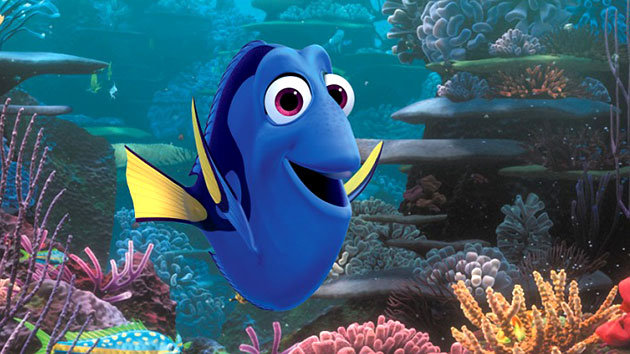The long awaited sequel to Disney’s Finding Nemo movie, Finding Dory, finally hit theaters this past weekend and I was thrilled to attend the film on opening weekend. Finding Dory’s producers marketed the heck out of this movie for at least a couple years leading up to its release, and there is no doubt that Finding Dory will be a ‘cultural moment’ for the aquarium hobby, just as Finding Nemo was so pivotal to marine aquariums when it was released.
I had been keeping a reef aquarium for eight years, and working retail fish stores for five years, when Finding Nemo came out. The response to the film then was nothing short of overwhelming, and seemingly overnight the entire population of young persons aged 12 and under all decided that clownfish would henceforth be called ‘Nemos’.

I can’t tell you how grating it was to have kids in the aquarium shop excitedly bang on the aquarium glass, and squeal “NEMO” every time that they saw a clownfish in a tank, but now I even find myself referring to clownfish as Nemos to the youngest children. I expect that from now on all regal blue tangs will be called Dorys as well, and I’m ok with that since it means that a whole new generation of future adults will grow up with some degree of familiarity with the marine environment.
This is the most important point and the lasting legacy of the Finding Nemo and Finding Dory movies; by characterizing such diverse creatures as clownfish, blue tangs, octopus, stingrays and whale sharks, the kids who will invariably end up watching the Finding Dory movies on repeat during their child hood will hold a greater sense of affection for them.

Obviously, Finding Dory is a fantasy animated motion picture which takes lots of liberties about portraying the marine environment and the creatures that live there. But on the whole, the plot elements and settings of Finding Dory are remarkably lifelike, with lots of fidelities to the real natural marine environment.
The opening scenes of Finding Dory picture a gorgeous coral reef, with recognizable corals, sponges and anemones that pulled at my aquarists heartstrings. Even if these reef animals densities were quite a bit higher than they would be on a natural reef, it was quite amazing to see even different types of recognizable Acropora at different parts of the movie.
There have been major improvements to animation technology in the 13 years since Finding Nemo was released and I was really impressed with the real-life details that were imparted on both Dory and Nemo. In Finding Dory the scales of the clownfish were subtly but very beautifully rendered, and we love the little freckles on Dory’s face which correspond with the rough scales that are found on the snouts of wild Paracanthurus hepatus.

The Finding Dory movie was really entertaining, and it represented the marine environment in truly exquisite detail. Being a kid’s movie, there wasn’t really much of an antagonist so it does feel like the seaside Marine Lab and its capture of marine animals for captive aquariums could be pictured as the antagonist, or the villain, depending on your point of view.
Disney did its part to bring attention to ocean trash with one scene where Dory has gotten tangled up in a plastic six-pack ring, which is how she gets collected for ‘rehabilitation’ by the Marine Lab. So in this frame of reference the aquarists can be viewed as saviors of Dory, but on the other hand, then Dory is captive and has to escape the seaside aquarium before she gets sent off to Cleveland.

The aquarium hobby as a whole has to get really involved in the media and public outreach to show how much we really care about the fishes we keep and the environment they come from. And for the most part, I am already seeing that from a wide variety of aquarium groups and individual businesses.
However the cultural moment that Finding Dory represents is really just the beginning of a very long campaign for the aquarium hobby. It is my hope that we can come together and do our best to educate the owners of the new aquariums which will be built, and all the Dorys which will be acquired by the worldwide public in the coming years.
Finding Dory is a really fun movie, you should watch it, take some kids to watch it, and let us rejoice that the coral reef environment is in such focus of popular culture that we’ve got a major movie release that celebrates the fish and marine animals we all hold dear.



